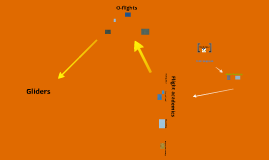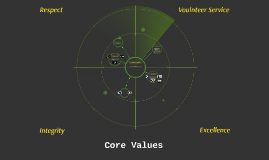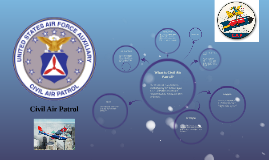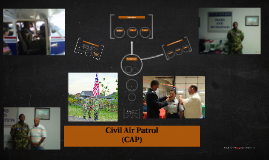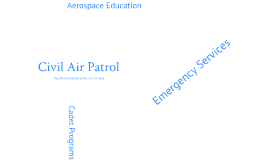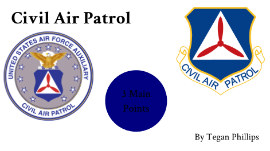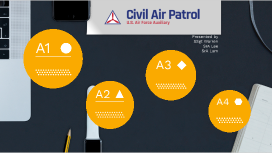Civil Air Patrol
Transcript: Presented by SSgt Warren SrA Lee SrA Lam A1 What is the Civil Air Patrol? Mission Statement: Supporting America's communities with emergency response, diverse aviation and ground services, youth development and promotion of air, space and cyber power. The Civil Air Patrol is a congressionally chartered, federally supported non-profit corporation that serves as the official auxiliary of the United States Air Force. CAP is a volunteer organization with an aviation-minded membership that includes people from all backgrounds, lifestyles, and occupations. A2 Personnel and Resources As a Total Force partner and Auxiliary of the U.S. Air Force, Civil Air Patrol is there to search for and find the lost, provide comfort in times of disaster and work to keep the homeland safe. Its 60,000 members selflessly devote their time, energy and expertise toward the well-being of their communities, while also promoting aviation and related fields through aerospace/STEM education and helping shape future leaders through CAP’s cadet program. A Leaders Eleven distinguished members make up Civil Air Patrol’s Board of Governors. They are leaders in their own right, drawn from the ranks of CAP volunteers — who have careers in a cross-section of America’s workforce — along with U.S. Air Force officers and civilians involved in the fields of education, aviation and emergency management. These board members move the organization forward through collective decision-making, which generates strategic policies, plans and programs designed to guide CAP both today and tomorrow. They are assisted by the national commander, who serves as Civil Air Patrol’s chief executive officer, as well as the organization’s chief operating officer and the CAP-U.S. Air Force commander, who act as advisors. 10 Members are former or current US Air Force active duty members A Resources Civil Air Patrol is a nonprofit organization and receives resources and funds from the U.S. Air Force to help accomplish our missions. CAP also relies on contributions to help support initiatives that are not funded by the Air Force, such as cadet special activities, aerospace education workshops, and member training opportunities. Organization and Structure A3 Begins at the National level, which is made up of 4 distinct bodies. Below the National level are the Region, Wing, Group, Squadron and Flight levels. A National Level Board of Governors (BoG): Govern, direct and manage the affairs of the corporation. CAP Senior Advisory Group (CSAG): Recommend policy and propose constitution bylaws changes to the BoG Command Council: Advises the National commander on operational issues. National Headquarters: Consists of National Commander, Chief Operating Officer and the national staff A National Commander Current National Commander: Major General Mark E. Smith. Highest Senior Official within CAP Former USAF Colonel who served 26 years A Regions The region commander, at the rank of Col, is appointed by the national commander. Has authority over all CAP units and personnel in their respective region. Regions include: North-east, Middle-East, Great Lakes, South-East, North-Central, South-West, Rocky Mountain and Pacific A4 Major Events Saved 117 lives and made 534 finds through Air Force-assigned search and rescue efforts in 2019. Operates one of the largest fleets of single-engine piston aircraft in the world, with 560 planes currently available. Conducts 90% of inland search and rescue in the U.S. as tasked by the Air Force Rescue Coordination Center and other agencies. Nearly 250 members from the Puerto Rico Wing and 20 other CAP wings and regions across the U.S. have been involved in the mission, providing local first responders, the Federal Emergency Management Agency and other U.S. government agencies with aerial photography to document damage on the islands.






